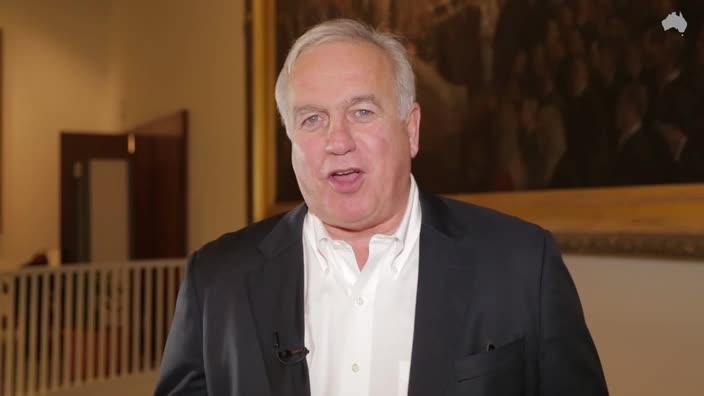No shocks, but also little of substance in 2015 budget
This year’s budget is a little more than a long, grovelling apology for last year’s stuff up.

The transformation of the Abbott Government between last year’s budget and this year’s is a decent attempt to emulate Arnold Schwarzenegger between Terminator 1 and Terminator 2. Worst ever baddie in one movie; best ever good guy in the next.
In a way this year’s budget is a little more than a long, grovelling apology for last year’s stuff up.
The pre-budget softening-up program before the 2014 budget and then the shock of budget day itself produced a collapse in consumer and business confidence that still threatens to spiral into recession, especially with the unexpected fall in the iron ore price afterwards.
And then they failed to get most of these confidence-destroying measures through the Senate!
The key task of this year’s budget was to rebuild confidence and get businesses investing again after last year’s disastrous budget.
In a way, this had to be a sort of self-fulfilling budget – that is, it needs to create its own economic growth, through improved confidence, on which the forecasts of deficit reduction can be based which can lift confidence and produce economic growth that will reduce the deficit, and so on.
Will it do that? Well, it’s possible that in the days and weeks ahead the simple absence of nasty shocks will do the trick, as long as Joe Hockey, in particular, is up to the task of selling it.
At least the shock factor this year was nil: maybe there was something in the budget that hadn’t been pre-announced or leaked, apart from the deficit figure, but if so it wasn’t obvious.
But the substance is virtually nil as well: the list of budget measures, entirely pre-announced as it was, was very, very short.
And in particular the measures specifically designed to lift business investment and counter the collapse in mining investment and employment are unlikely to make any difference whatsoever.
The small business tax cut is virtually pointless, a $1 billion a year handout to family-owned shops and sole tradies that will achieve nothing. That’s because any investment or new employment that a small business is likely to make in response to the tax cut will be designed to get its turnover above $2 million a year, otherwise what’s the point, at which level the tax rate goes back to 30 per cent.
Likewise the accelerated depreciation: it applies to assets of less than $20,000, and that’s not even going to buy a locally made car. Maybe an espresso coffee machine for a cafe, but only a cheap one.
The key infrastructure initiative in the budget involves removing the $1.5bn promised to the Victorian Government for the East West Link and the list of payments.
At a time when interest rates are at historic lows, there is no borrowing for infrastructure beyond the NBN spending already committed, the $5bn Northern Australia proposal and the recycling of post-privatisation tax proceeds.
The new childcare subsidies — the spending centrepiece of the budget — will obviously not create jobs, but only make more people available for the jobs that are there.
So with nothing apart from childcare and pointless small business tax cuts, the budget must be all about the fiscal narrative — the one that says the deficit next year will be $35bn and that there is a credible path back to surplus in 2019-20.
That narrative, the government hopes, will strike a balance between the need to stimulate the economy in harmony with the Reserve Bank’s tax cuts while at the same time soothing nerves about the possible loss of Australia’s AAA credit rating through ongoing budget deficits.
Admittedly this was always going to be a very difficult task. An economy slowdown due to commodity price collapse is not the ideal time for fiscal consolidation, yet that is what’s required, politically if not economically.
The problem is that the path back to surplus looks to be based on an unrealistically rapid economic recovery.
Real GDP growth is forecast to get back to its potential of 3.25 per cent in 2016-17, and nominal GDP growth to 5.5 per cent. That’s in the middle of the Reserve Bank’s newly lowered forecast range for 2016-17 of 2.5 to 4 per cent, but market economists are forecasting 3 per cent at most, with risks clearly to the downside.
As Treasury’s Budget Statement says: … “the pace and timing of the pick-up in economic growth is subject to some uncertainty”.
“The headwinds from the reduction in mining investment are significant and it is also possible that the pick-up in non-mining investment may not be as strong as expected. There is also a risk that momentum in consumer spending could dissipate.”
Exactly. It’s all about consumer and business confidence, leading to non-mining business investment, and thus employment.
And after what happened last year, it’s likely that more will be needed for that than an absence of bad news.


